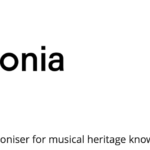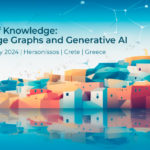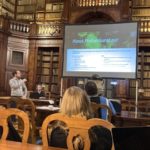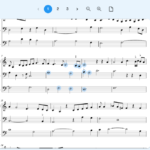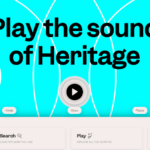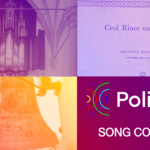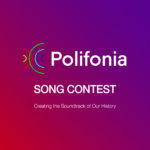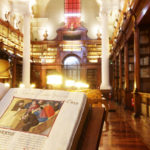Interview to Umanesimo Artificiale about the art installation 'Data Wanderings': a sensory journey with Polifonia data
Make sure to check out a sensory experience called Data Wanderings from this Friday (Oct. 13) in Salaborsa, Bologna. The art installation is a Polifonia project, built by Umanesimo Artificiale and based on sources from our project.

Make sure to check out a sensory experience called Data Wanderings from this Friday (Oct. 13) in Salaborsa, Bologna. The art installation is a Polifonia project, built by Umanesimo Artificiale and based on sources from our project.
An interview with the creators:
“Data Wanderings invites viewers to embark on a journey through the intricate labyrinth of data, to discover the secret melodies of numbers, and to embrace the creative and informative potential that lies within them…”

Could you introduce yourselves. Who is behind this creation?
The installation is curated and produced by Umanesimo Artificiale (Italian for ‘Artificial Humanism’). Umanesimo Artificiale is a non-profit cultural organization and network of artists working with exponential technologies. It operates worldwide from Fano, Italy, with partners throughout Europe. Umanesimo Artificiale was born with the intent to investigate what does it mean to be human in the era of artificial intelligence. It promotes computational (creative) thinking through the channel of digital and performing arts, raising awareness of a fertile relationship between humans, artists and new technologies. In this particular work the resources involved – on our side – are the director of Umanesimo Artificiale Filippo Rosati for the concept, and the creative coder Alex Piacentini for data analysis and programming of the interactive installation.

What is the first we need to know about this installation?
Data Wanderings is a synesthetic installation that challenges the boundaries between art, technology and data by transforming the rawness of data into a memorable sensory journey.
The audiovisual installation was conceived with the aim of making the user experience a physical simulation of virtual interaction with the mass of data coming from the knowledge graph of the Polifonia project.
What do you hope the viewer experiences? And: given your intentions as organization and network, it also seems to me that you want to make the spectator aware of something?
Through an audio-visual exploration the spectator can experience the feeling of being immersed and interact with the database in a performative way. The mission was to recreate the feeling of being overwhelmed by big data, and thus start a reflection on the amount of data we produce everyday, the energy and computational power required to analyse it and extract information. Through modern graphical computer interfaces we click, drag, drop, scroll, select… but we are not aware of the amount of data we produce and we leave behind. The drive was to target the emotions of the spectator and inspire curiosity and a sense of urgency.
Can you tell us a little bit more about the sources that were used to create this installation and how are they applied?
The installation uses data from the ChoCo dataset, accessed through a SparQL endpoint. ChoCo is a large dataset for musical harmony knowledge graphs. The corpus integrates more than 20,000 human-made, high-quality harmonic annotations from 18 highly heterogeneous chord datasets. The annotations are rich in provenance data (e.g. metadata of the annotated work, authors of annotations, identifiers, etc.) and refer to both symbolic music notation and audio recordings. The data consists of 8000+ chords extracted from various songs. Each chord has been further processed to extract the notes and the sound frequencies that compose it, used in the installation to create visual patterns and sound effects. The huge variety of acoustic timbres and tone colours drawn from the collective music history are reconfigured by this audiovisual instrument/interface into something new.
Were there any challenges with the sources while creating the installation?
At first we considered other datasets of the Polifonia project (for example MusoW), but soon experienced a lack in the standardization of the final data points. We opted for the Choco dataset also for this reason. It would be great if a larger amount of sources would be combined and offer direct access to the data.
Where can we see this installation?
The opening is on Friday Oct, 13 at 6 pm and the installation can be experienced until Saturday Oct, 28 at Sala della Musica in Salaborsa, 2° floor, Piazza del Nettuno, 3, 40124 Bologna. The entrance is free.
Do you want to learn more about Umanesimo Artificiale? Visit their website and Instagram.
